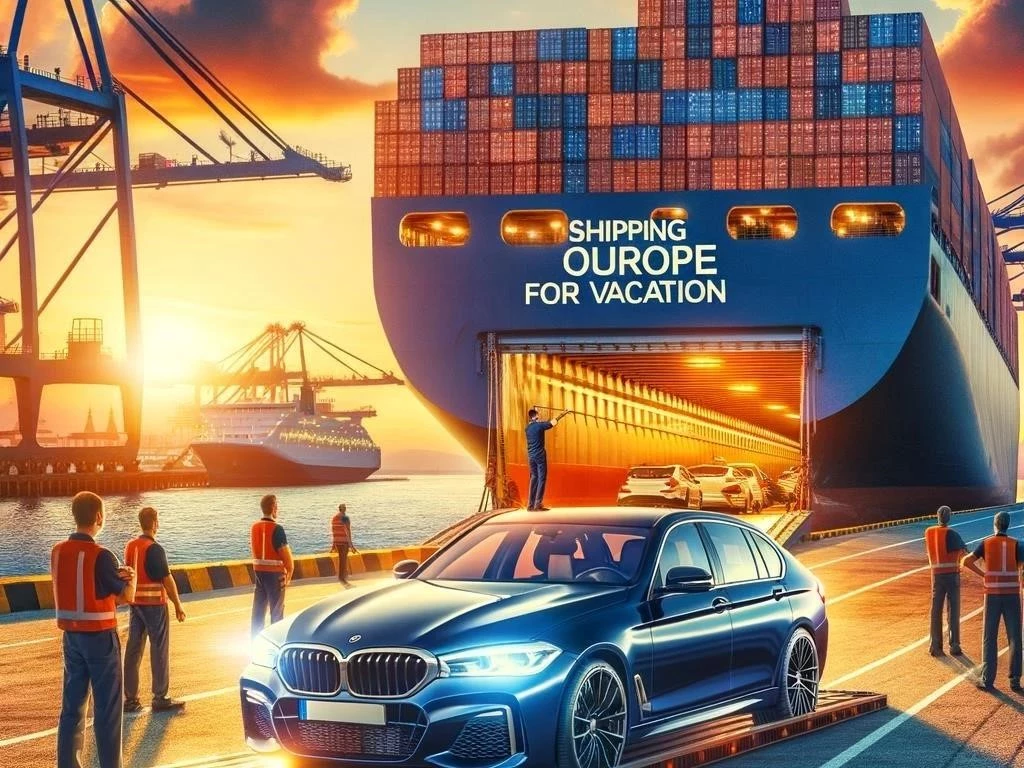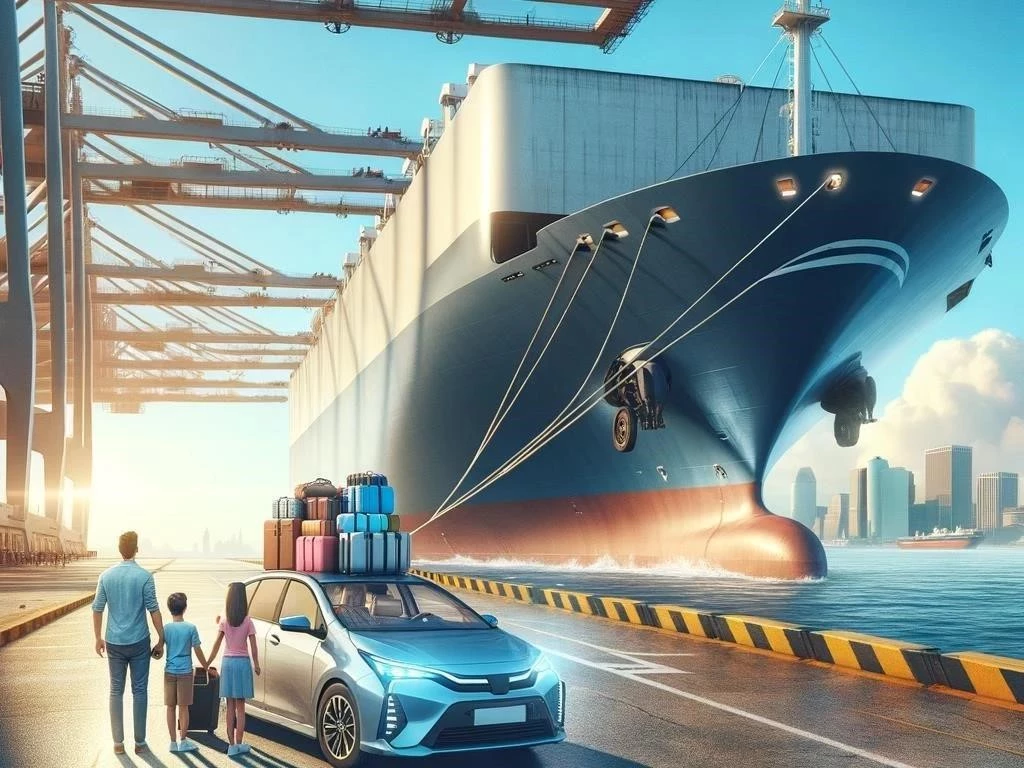Can I Ship My Car to Europe for Vacation?
Shipping your car to Europe for vacation is feasible, providing convenience and flexibility during your travels, enhancing your overall experience on the continent.
Car shipping offers travelers the ability to explore Europe at their own pace, ensuring a memorable vacation experience with the convenience of personal transportation options.
1.1 Importance of Transport Vehicle for Travel
Having a transport vehicle during your European vacation is crucial for convenience and accessibility. It allows for spontaneous road trips, visits to off-the-beaten-path destinations, and the freedom to explore various attractions without relying on public transport. Additionally, traveling with your own vehicle provides comfort and familiarity, enhancing the overall travel experience and allowing for personalized adventures across Europe.
1.2 Overview of Overseas Auto Transport
Overseas auto transport involves shipping vehicles across international borders, allowing travelers to take their cars on vacations. This process typically includes various shipping methods, such as container shipping and roll-on/roll-off services. Understanding these options helps you choose the best method for your needs, ensuring a smooth vehicle delivery while complying with customs regulations and shipping logistics effectively.
Understanding Shipping Logistics for Car Transport
Understanding shipping logistics is essential for successful car transport. It involves planning, choosing reliable shipping companies, and ensuring compliance with regulations throughout your journey.
2.1 Choosing the Right Shipping Companies
When selecting shipping companies for your car transport, prioritize those with proven experience in overseas auto transport. Research customer reviews, compare services, and ensure they provide adequate vehicle insurance options. Additionally, inquire about their shipping schedules, pricing structures, and available overseas transport options. A reliable company will facilitate a smooth shipping process, ensuring your car arrives safely at your destination.
2.2 Types of Freight Services Available
There are several types of freight services available for car shipping, including container shipping and roll-on/roll-off (RoRo) services. Container shipping offers enhanced protection for your vehicle during transit, while RoRo allows for easier loading and unloading. Additionally, some companies provide specialized freight options, catering to luxury or classic cars, ensuring tailored solutions for your overseas auto transport needs.
Shipping Costs and Budgeting for Your Trip
Understanding shipping costs is vital for budgeting your trip. Factors such as transport method, distance, and insurance influence overall expenses, requiring careful planning and evaluation.
3.1 Factors Affecting Shipping Costs
Several factors influence shipping costs when transporting your car to Europe. These include the shipping method chosen, distance to the destination ports, vehicle size and weight, and insurance coverage. Additionally, seasonal demand and fuel prices can affect rates. Understanding these factors allows for better budgeting and helps you find the most cost-effective auto relocation options available.
3.2 Comparing Car Export and Import Costs
When planning your car transport, it’s essential to compare car export and import costs. Export costs typically include shipping fees, customs clearance, and documentation. Conversely, import costs may encompass import duties, taxes, and additional fees at destination ports. Understanding these differences helps establish a comprehensive budget, ensuring a smoother financial planning process for your European vacation.

Preparing Your Car for International Shipping
Preparing your car for international shipping involves essential steps, including cleaning, removing personal items, and ensuring mechanical soundness, which facilitates a smooth shipping process.
4.1 Vehicle Delivery Process
The vehicle delivery process involves several key steps to ensure a smooth experience. Initially, you must schedule a pickup with the shipping company. During the pickup, the carrier will inspect your car and document its condition. Following this, your vehicle will be securely loaded for transport. After arriving at the destination, you’ll need to clear customs before taking possession.
4.2 Vehicle Insurance Considerations
When shipping your car internationally, understanding vehicle insurance considerations is crucial. Check if your existing auto insurance covers overseas transport; if not, consider purchasing additional shipping insurance. Evaluate coverage options, such as total loss, damage during transit, and liability. Ensuring adequate insurance protection safeguards your investment and provides peace of mind throughout the shipping process to Europe.
Navigating Customs Regulations in Europe
Navigating customs regulations is essential when shipping a car to Europe. Understanding import duties, necessary documentation, and compliance requirements ensures a smooth vehicle entry process.
5.1 Understanding Import Duties
Understanding import duties is crucial when shipping your car to Europe. These fees vary by country and depend on the vehicle’s value and type. Typically, import duties are calculated as a percentage of the car’s customs value, including shipping costs. Familiarizing yourself with specific duty rates and regulations of your destination country ensures compliance and helps prevent unexpected expenses.
5.2 Required Documentation for Car Import
When importing your car to Europe, several key documents are required for customs clearance. These typically include the vehicle registration, proof of ownership, bill of lading, and insurance documentation. Additionally, you may need to provide a customs declaration and, depending on the destination, specific environmental compliance certificates. Ensuring all paperwork is complete helps facilitate a smooth import process.
Shipping Schedule and Timelines
Understanding the shipping schedule and timelines is essential for planning your vacation. Factors such as shipping method, distance, and customs clearance affect overall delivery times.
6.1 How Long Does Car Shipping Take?
The duration of car shipping to Europe can vary significantly based on several factors. Typically, ocean transport takes between two to six weeks, depending on the shipping method and destination ports. Customs clearance and any potential delays also impact overall timelines. Planning well in advance ensures you accommodate these variables and have your vehicle ready for your vacation.
6.2 Planning Your Travel with Car
When planning your travel with a car in Europe, consider your itinerary, including routes, destinations, and accommodations along the way. Research local driving regulations and familiarize yourself with road signs and toll systems. Additionally, ensure you have necessary documents like your driver’s license and insurance. This preparation enhances your overall experience and allows for a more enjoyable road trip adventure.
Exploring Overseas Transport Options
Exploring overseas transport options for your vehicle is essential for a seamless travel experience. Understanding different shipping methods helps you choose the most suitable solution.
7;1 Container Shipping vs. Roll-on/Roll-off
When choosing between container shipping and roll-on/roll-off (RoRo) for car transport, consider several factors. Container shipping offers enhanced protection from weather and potential damage, ideal for luxury vehicles. Conversely, RoRo is generally more cost-effective and faster, as vehicles are driven directly onto the ship. Evaluating your budget, vehicle type, and shipping timeline helps determine the best option for your needs.
7.2 Destination Ports in Europe
When shipping your car to Europe, selecting the right destination ports is essential. Major ports like Rotterdam, Hamburg, and Antwerp offer excellent services and connectivity. These ports facilitate efficient customs clearance and provide various transport options to your final destination. Researching the nearest port to your travel itinerary ensures smoother logistics, saving time and minimizing additional shipping costs.
Car Rental Alternatives During Your Trip
Exploring car rental alternatives during your trip can enhance your travel experience. Options include ridesharing services, public transportation, and bicycle rentals for convenient exploration.
8.1 Pros and Cons of Renting a Vehicle
Renting a vehicle during your vacation offers numerous advantages, such as flexibility, convenience, and access to various destinations. However, downsides include potential high costs, unfamiliar driving regulations, and the hassle of navigating rental agreements. Additionally, parking can be challenging in busy cities. Weighing these pros and cons helps you determine if renting is the right choice for your trip.
8.2 Local Transportation Options for Road Trips in Europe
For road trips in Europe, consider various local transportation options to enhance your experience. Public transit systems, including trains and buses, connect major cities efficiently. Bicycles are also popular in many regions, offering an eco-friendly way to explore. Additionally, ridesharing services and taxis provide convenient alternatives for short distances, ensuring you enjoy your trip without transportation hassles.
Auto Relocation Tips for a Smooth Experience
To ensure a smooth auto relocation experience, plan ahead, stay informed about regulations, communicate with shipping companies, and prepare your vehicle adequately before transport.
9.1 What to Expect Upon Arrival
Upon arrival in Europe, expect to go through customs clearance for your vehicle. Ensure you have all necessary documentation ready, including proof of ownership and insurance. After clearance, inspect your car for any damage incurred during transit. Familiarize yourself with local driving laws and regulations to ensure a safe and enjoyable experience while navigating European roads.
9.2 Adapting to European Driving Regulations
Adapting to European driving regulations is essential for a safe journey. Familiarize yourself with local speed limits, road signs, and rules regarding roundabouts. Additionally, understand the legal requirements for insurance and vehicle registration in your destination country. Keep in mind that driving is often on the opposite side of the road, which may require extra caution and practice.
Shipping your car to Europe can significantly enhance your vacation experience, providing freedom to explore. Proper planning and understanding logistics ensure a memorable adventure awaits.
10.1 Final Thoughts on Car Shipping
Car shipping to Europe offers numerous benefits, such as convenience and flexibility during your travels. However, it requires careful planning and understanding of logistics, including costs, regulations, and timelines. Researching shipping companies and methods ensures you select the best option for your needs. Ultimately, being well-prepared leads to a stress-free experience, allowing you to enjoy your European adventure fully.
10.2 Travel Planning Essentials for Your Journey
For a successful journey, prioritize travel planning essentials including creating an itinerary, booking accommodations, and researching local attractions. Additionally, ensure you have necessary documentation, such as passports and vehicle insurance. Familiarize yourself with local customs and driving regulations to enhance your experience. Keeping a flexible mindset allows for spontaneous adventures and ensures an enjoyable European vacation with your car.








